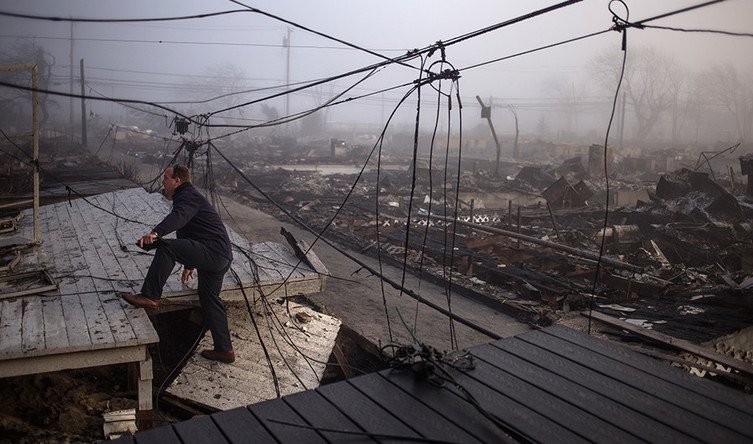Nearly 40% of US population at risk of flooding - study

Changing storm dynamics are causing a greater risk of flooding than they were 50 years ago, particularly on the Atlantic and Gulf coasts, putting nearly 40 percent of the US population in harm’s way, according to a new study from a Florida university.
In the study, Florida researchers used records of rainfall, sea levels and hurricanes for more than 30 American cities along the Atlantic, Gulf and Pacific coasts to assess the relationship between heavy rainfall on land and abnormal rises in water levels occurring during a storm or storm surge.
For both the East and West coasts, they found that, currently, weather events blowing water towards the coast are more likely to cause heavy rainfall over the land and lead to flooding than weather events that took place in the 1950s.
GUEST POST: 'Compound' flood risk rising for coastal cities in the US, study finds http://t.co/reRM9vXw1tpic.twitter.com/uI64hpC7fx
— Carbon Brief (@CarbonBrief) July 27, 2015They concluded that risks were higher for cities along the Atlantic and Gulf coasts than on the Pacific coast because tropical cyclones and hurricanes occur more often in the East.
“Nearly 40 percent of the US population resides in coastal counties,” said the study’s lead author Thomas Wahl of the University of South Florida College of Marine Science, according to Science Daily.
“Flooding can have devastating impacts for these low-lying, densely populated and heavily developed regions and have wide-ranging social, economic and environmental consequences.”
READ MORE: 2015 set to break global heat record in 135-year history of monitoring
According to the National Weather Service, floods are the most common natural disaster in the US. While they don’t claim as many lives as heat waves or hurricanes, they do cause significant disruption to people’s lives through displacement and property damage. Between 2010 and 2014, the average flood claim was for almost $42,000.
Researchers also analyzed data specific to New York City and said the extreme flooding during Hurricane Sandy in 2012 was the result of an extreme storm surge, but that rainfall during the storm was “small in the historical context for such an event.”
Storm surges amped by rain increase US flood risk: study http://t.co/NekLIlRcmvpic.twitter.com/zYggpnEuIa
— FRANCE 24 (@FRANCE24) July 27, 2015They found that, at present, New York’s chances of experiencing a weather scenario combining storm surge and heavy rain is double that of 60 years ago.
The paper describing the research appeared in Nature Climate Change. Wahl and his colleagues said there needs to be more research at local levels to determine risks and effects.
READ MORE: Leading scientists urge immediate climate action
“That research will require complex, integrated modeling experiments that investigate surface and drainage flows and include storm surge, rainfall and river discharge,” said Wahl. “In light of climate variability and change, it will be important to develop a detailed understanding of future patterns of storm surge and high precipitation amounts occurring in tandem.”
Wahl said that if they can identify which communities are most at risk, they might be able to limit damage and increase people’s safety.












